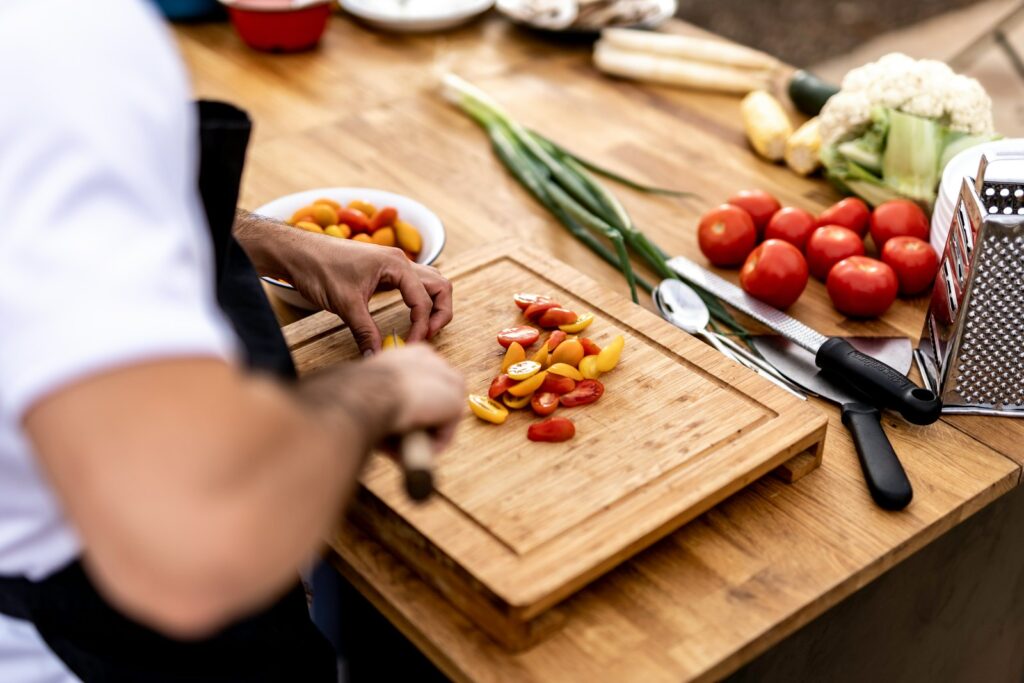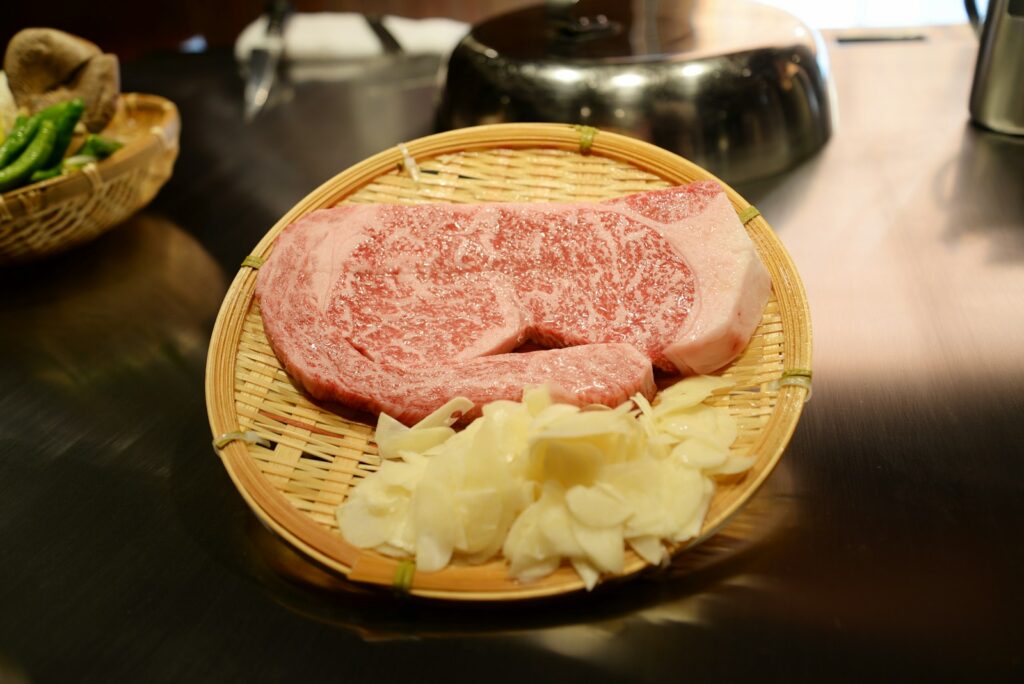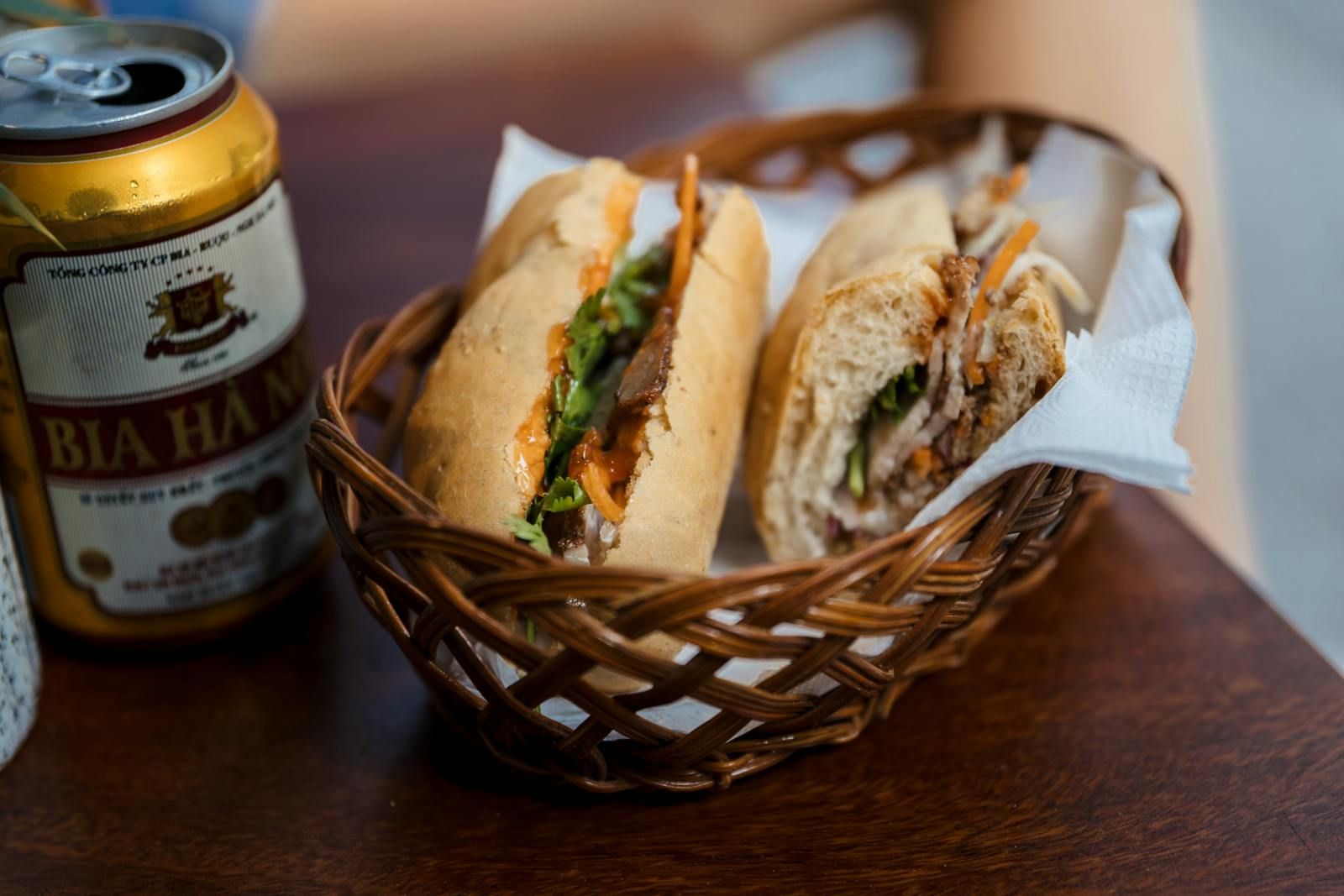
There’s an undeniable joy in stepping into the kitchen, apron on, ready to whip up a delicious meal. For many of us, cooking is a beloved hobby, a way to relax, create, and nourish ourselves and our loved ones. Yet, even with our favorite easy weeknight recipes, there comes a point when we crave a deeper challenge, a dish that truly tests our skills and expands our culinary horizons.
While the internet is awash with quick hacks and simple solutions, some dishes stubbornly refuse to be rushed or simplified. These aren’t just meals; they are culinary adventures, demanding effort, skill, special ingredients, and, most importantly, time and patience. They can be lofty even for highly trained chefs, often requiring meticulous planning or constant vigilance, making them particularly daunting for beginners.
But don’t be deterred! This journey through some of the most challenging dinner dishes isn’t meant to scare you away, but rather to inspire. Whether you’re a budding home cook eager to try something new or an adventurous beginner looking to elevate your game, understanding *why* these dishes are difficult is the first step toward conquering them. Get ready to put on your apron and dive into these exciting and complex meals that are sure to impress!

1. **Consommé**To the uninitiated, consommé might appear to be nothing more than an unassuming clear broth. However, for chefs – even highly trained ones – this soup is notoriously hard to master. While its foundation can be as simple as beef or chicken broth, it can also be elevated with veal or seafood bases, but regardless of its starting point, consommé is always a time-consuming and complicated endeavor.
The primary difference between a simple broth and a consommé lies in appearances. Broth typically remains cloudy with visible fats, whereas consommé is painstakingly clarified to achieve a crystal-clear purity. Legend has it that King Louis XIV of France desired a soup so clear he could see his reflection in it, leading to the development of this refined dish. This historical context underscores why consommé is equated with luxury and fine dining; its production demands significant skill.
The core of creating a truly beautiful consommé involves building what chefs call a “raft.” This raft is a unique mixture of egg whites, beaten into soft peaks, combined with a protein of choice and mirepoix (a blend of diced vegetables like carrots, celery, and onions). This stiffened egg white mixture then floats atop the broth, resembling a puffy meringue boat.
As the consommé gently simmers, this clever raft slowly absorbs impurities from the broth. Once it has collected these solids, the raft is carefully discarded. Following this, the broth undergoes further straining to remove any remaining unwanted fat or particles, ensuring its pristine clarity. While this might seem like a lot of work for a clear broth, this meticulous process is precisely why consommé is considered an essential part of a chef’s repertoire, showcasing mastery of fundamental techniques and patience to create a flavorful, rich, and perfectly clear bowl.
Read more about: Your Daily Sip: 14 Expert-Backed Drinks to Naturally Lower Blood Sugar and Boost Your Metabolic Health

2. **Confit de Canard**Before the advent of modern refrigeration, various ingenious methods were employed to preserve foods and extend their shelf life. Confit, a French term, refers to a centuries-old process of cooking food, typically meat, and then preserving it in its own fat. When executed correctly, this technique allowed meat to last for days or even weeks when stored in a cool, dry environment. While we now have refrigerators, the historical necessity of confit has evolved into a luxurious culinary practice.
Originating in medieval times, the technique of confit was vital for preserving proteins or produce between seasons, ensuring a consistent food supply. What was once a practical necessity is now a celebrated dish known for its tender, velvety textured meat. The transformation of a humble preservation method into a gourmet offering speaks volumes about the refined skill involved in its preparation.
The process to confit foods demands significant time, patience, and adherence to several distinct steps. It begins with a salt rub: a blend of salt and various seasonings is generously massaged into the protein, which is then left to marinate for at least 24 hours. This initial step is crucial as it actively forces moisture out of the meat while simultaneously infusing it with deep, complex flavors from the seasoning blend.
After the marinating period, the protein is meticulously rinsed to remove excess salt. It is then submerged entirely in oil and cooked “low and slow” – typically at temperatures ranging from 200 to 250 degrees Fahrenheit for an extended period, often up to six hours. This prolonged, gentle cooking at lower temperatures is key to tenderizing the meat without sacrificing its moisture. For meats with skin, like duck, there’s an additional, crucial final step: gently searing the confit to crisp the skin, creating a delightful textural contrast before plating and serving this incredibly rich and flavorful dish. It’s a true test of patience and precision.
3. **Lou Fassum**Stuffed cabbage is a dish with a rich and varied history, appearing in countless cultures across centuries, whether as individual cabbage rolls or as a whole stuffed cabbage. Various incarnations of stuffed cabbage recipes can be traced back as far as the 14th century with the Tartars in Eastern Europe, and its presence extends into Scandinavia and Ukraine, with the Jewish Simchat Torah having included stuffed cabbage for over 2,000 years. What makes Lou Fassum particularly challenging is not the availability of its ingredients, but rather the sheer amount of time and meticulous preparation it demands.
Lou Fassum ingeniously utilizes an entire head of cabbage, transforming it into a impressive culinary centerpiece. The core of the dish is its ‘farce,’ or filling, which typically consists of ground pork, a blend of seasonings, earthy mushrooms, onions, and garlic. Depending on the specific region or traditional recipe, you might also discover more unique additions, such as dried berries or lemon juice-soaked raisins, adding layers of unexpected flavor and complexity to the farce.
In France, the cabbage of choice for Lou Fassum is often Savoy cabbage, prized for its beautifully crinkly leaves. These leaves are not only tender but also possess enough resilience to withstand being bent and folded without tearing, making them ideal for the dish’s intricate construction. The entire head of cabbage is first boiled until its leaves become pliable, allowing for easy manipulation, and then rinsed to cool.
Following this, the cooked cabbage leaves are carefully laid out into a bowl, forming a foundational layer. A portion of the savory filling is then spread evenly over this layer. This meticulous process is repeated, alternating layers of cabbage and filling, much like constructing a lasagna, until the entire farce has been used. After shaping, the impressive cabbage ‘cake’ is typically frozen. Several more intricate steps follow, including poaching and then baking, before the Lou Fassum is finally served in elegant slices, resembling a grand, flavorful cabbage cake – a true testament to the cook’s dedication and skill.
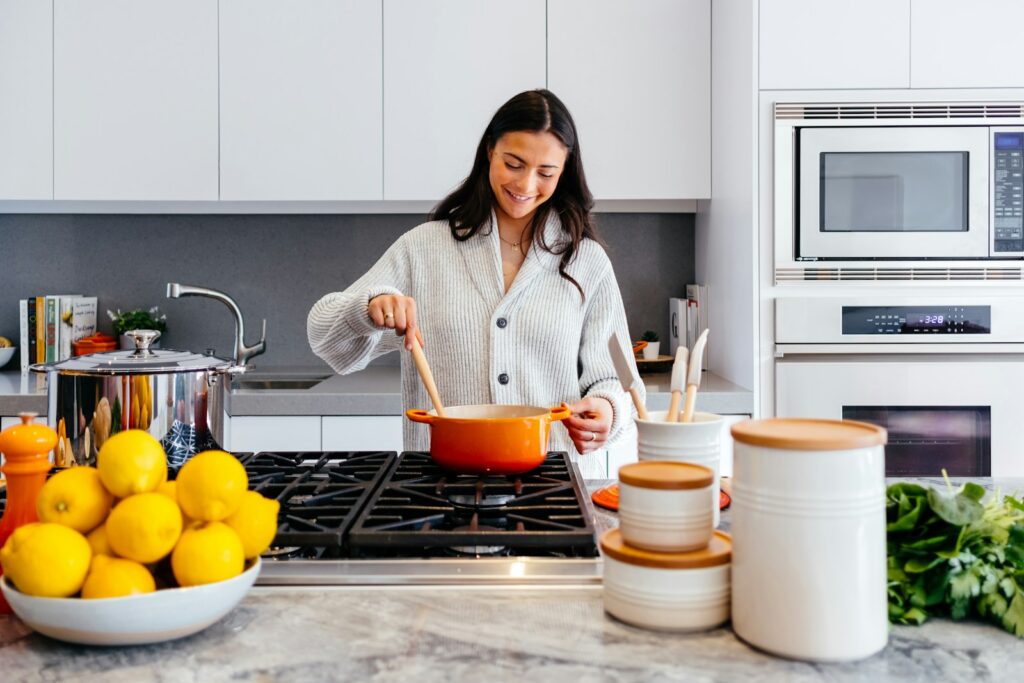
4. **Turducken**The turducken is a culinary marvel, a show-stopping creation that literally combines three different meats into one majestic roast. This ambitious dish is constructed by carefully stuffing an entire deboned chicken inside a whole deboned duck, which is then, in turn, stuffed into a partially deboned turkey. The result is a football-shaped, dense mass of poultry that is as much a feat of engineering as it is of cooking.
To ensure this impressive concoction stays together during its extensive cooking process, the layers of meat are held with what is famously known as ‘meat glue’ – yes, you read that correctly – and then securely wrapped in twine before being roasted. While the turducken might seem like a modern culinary dare, perhaps something conceived in Texas where everything is famously bigger, its history is somewhat murky, blending modern claims with ancient traditions.
Hebert’s Specialty Meats in Louisiana notably claimed to be the originators of the turducken in 1985. The dish gained significant popularity thanks to Cajun chef Paul Prudhomme and, perhaps even more famously, NFL football commentator John Madden, who was notorious for enjoying turduckens during Thanksgiving football games, bringing this unique creation into the national spotlight as a symbol of festive excess.
However, the concept of stuffing one animal into another, a process known as “engastration,” has roots far deeper than the late 20th century, dating back to the Middle Ages. Tales of elaborate stuffed meats, such as the nightmare-inducing cockentrice from the 15th century (a hybrid animal created for feasts), or even the fictional 1,000-pound Trojan boar stuffed with live birds from the Roman Empire, highlight a long tradition of ambitious, multi-meat preparations. These historical precedents make the turducken, while undeniably challenging, a part of a grand culinary lineage of difficult, extravagant dishes.
Read more about: Mic Drops and Meltdowns: 15 Podcasters Whose ‘Unpopular Opinions’ Were So Unhinged, They Lost Everything (Including Their Audience)
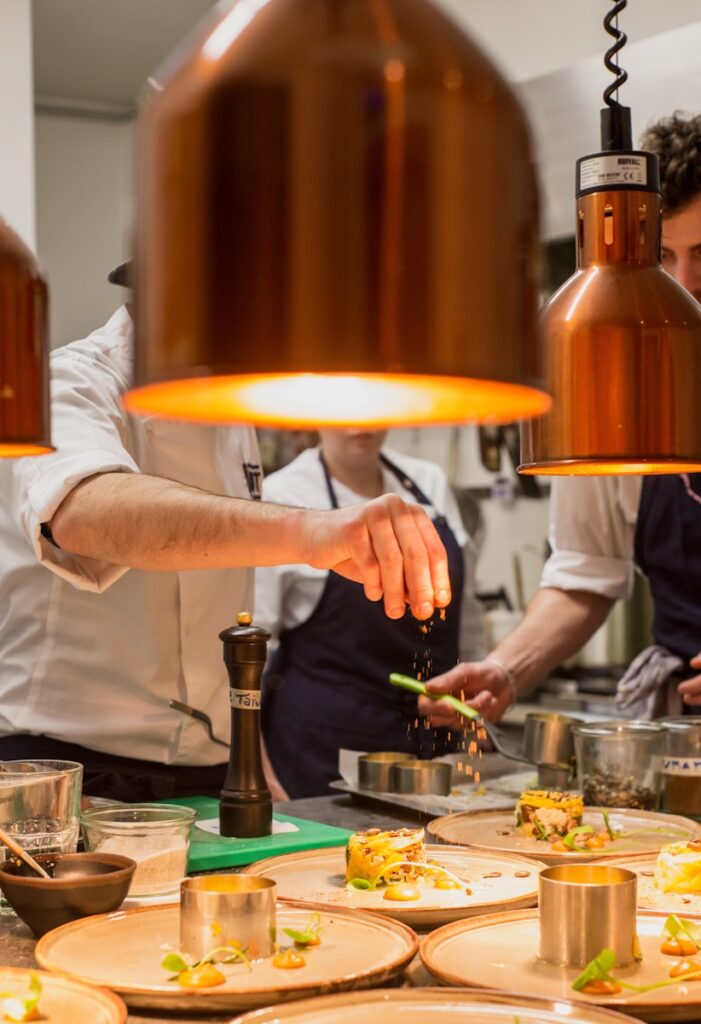
5. **Hot Water Crust Meat Pie (Free Standing)**Speaking of extravagant and decadent dishes, game pies stand as a quintessentially British culinary tradition, particularly notable in the Tudor courts where they were symbols of opulence. These elaborate pies often contained luxurious fillings such as lamprey eel, swan, peacock, pheasant, or, more commonly, wild boar. One of the most notorious and demanding to construct is the Tudor Christmas Pie, a creation that makes even the turducken seem like an easy task!
To further enhance the extravagance of some of these elaborate pies, whole stuffed swans, peacocks, pheasants, or other birds were often placed on top as an awe-inspiring garnish. While many of these fillings were indeed rarities, it wasn’t solely the contents that made these pies challenging; the crust itself presented a significant hurdle for any cook. This is where the hot water crust pastry comes into play, differing dramatically from most other pie doughs.
Unlike most crusts that require chilling throughout the preparation process, hot water crust is made by adding fat, typically lard, to hot water. This mixture is then brought to a boil, after which flour is added and mixed in. As you might guess, this process results in a sticky mass, which might initially seem counter-intuitive for a dough. However, this unique method yields a dough with distinct properties.
Hot water crust is specifically used because it produces a thicker, more pliable, and incredibly sturdy dough – robust enough to hold dense, heavy fillings like rich meats and savory gravies without collapsing. This dense dough is then used to create game pies that were either free-standing or formed into molds. The free-standing meat pie is considered the most difficult iteration because, as its name suggests, there is absolutely nothing to support it, demanding exceptional skill in dough handling and structural integrity to achieve its impressive, self-supporting form.
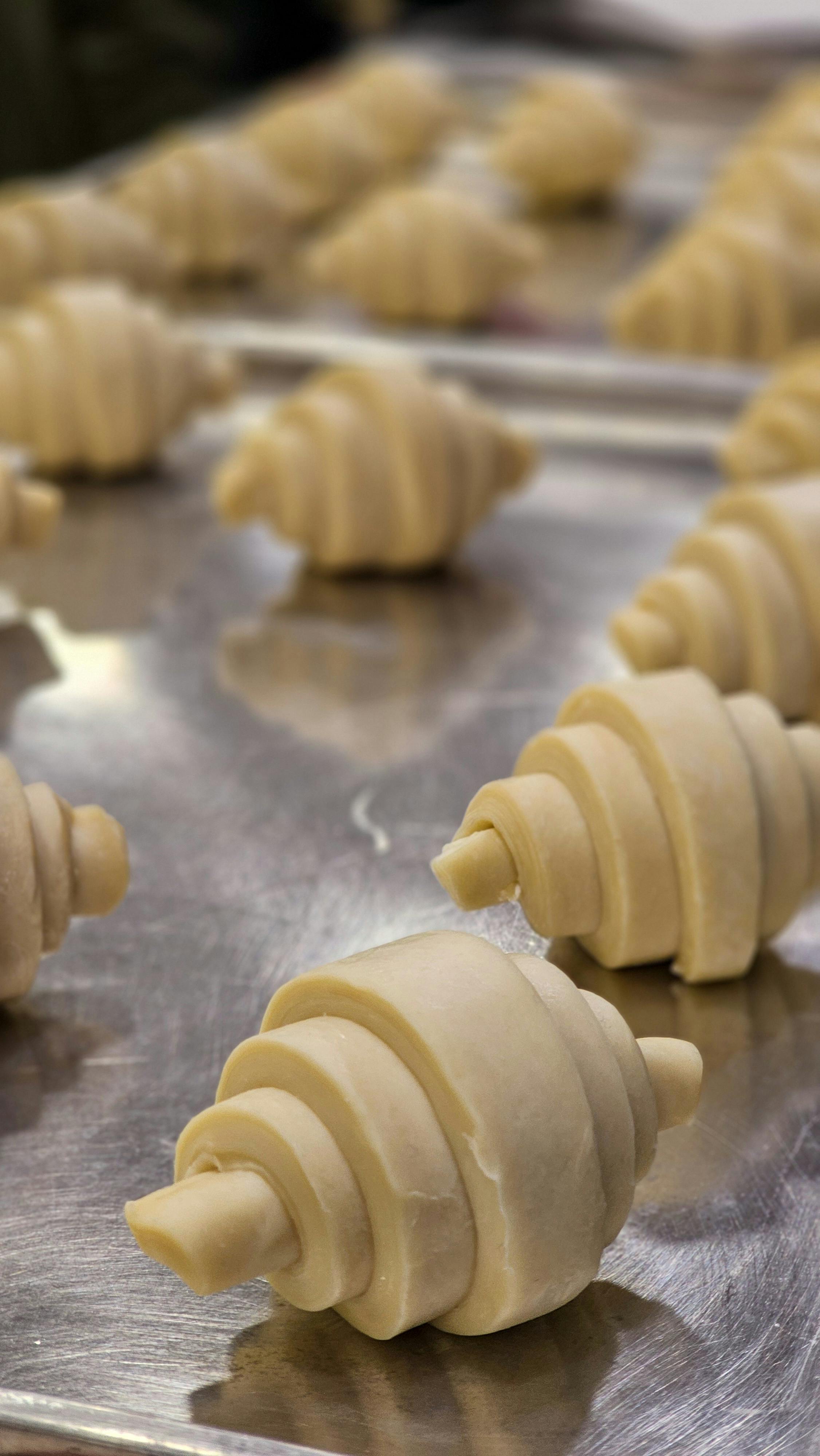
6. **Croissants (Laminated Dough)**In the world of pastries and doughs, few are as iconic, delicious, or challenging to master as laminated dough. When executed perfectly, laminated dough yields flakey, tender, and intensely buttery creations like classic croissants, the trendy cronuts (a delightful doughnut/croissant hybrid), or the slightly more approachable croissant bread. Interestingly, laminated dough doesn’t require specialized ingredients or equipment to make; its difficulty stems from the time commitment, meticulous planning, and above all, an abundance of patience.
It is the precise timing involved that often makes laminated dough seem intimidating, particularly for beginners. For example, making croissants from scratch can take as long as three days! However, there’s no need to panic at that seemingly daunting figure, as much of that time is passively spent allowing the dough to chill and rest in the refrigerator, a critical step that cannot be rushed.
Baking is fundamentally an exacting science, which means following your chosen recipe precisely is paramount. Many experienced bakers recommend using a kitchen scale that measures both grams and ounces for laminated dough, as precise ingredient ratios are crucial for success. While there are numerous tips to aid in crafting the best laminated dough, a fundamental key is maintaining a consistently cold kitchen environment and ensuring your dough remains thoroughly chilled throughout the process.
Laminated dough is created by repeatedly folding butter between layers of dough, followed by chilling periods. These steps are meticulously repeated several times, and this cyclical process is a significant reason why laminated doughs are so challenging. There needs to be a sufficient number of folds to create the characteristic lamination – the distinct, delicate layers – without overworking the dough, which can lead to toughness, or allowing the butter to melt during the folding stages, which would destroy the layers. During baking, the butter melts between these carefully crafted layers, expanding them and creating pockets of steam, which ultimately result in the signature light, airy, and flaky texture. Once you’ve conquered this fundamental dough, you’re ready to tackle another impressive challenge, perhaps a Beef Wellington or a slightly more complicated Salmon Wellington, both of which utilize this incredible pastry.

7. **Puff Pastry and Choux Pastry**Stepping into the world of advanced baking, we encounter doughs that truly test your mettle: puff pastry and choux pastry. While laminated dough, as we explored with croissants, is incredibly challenging, puff pastry offers its own unique set of trials, yet it’s often considered a slightly less complex sibling because it requires fewer folds and doesn’t use yeast. Both, however, are foundational for an array of breathtaking desserts and savory dishes, proving that sometimes, the simplest ingredients can lead to the most intricate outcomes.
The inherent difficulty in mastering puff pastry lies in its delicate nature. To achieve those coveted, ethereal layers, the dough must be handled minimally and kept consistently chilled. There’s a cardinal rule: never, ever roll the dough right to the edges. Doing so can mash the layers together, which will prevent that glorious puff from happening in the oven, leaving you with a dense, disappointing result instead of a light, airy masterpiece. It’s a true lesson in gentle precision and the art of restraint.
Then there’s choux pastry, pronounced “shoo,” or pâte à choux, the magical base for delights like croquembouche and éclairs. Its ingredients are deceptively simple—milk, butter, sugar, salt, flour, and eggs—but the challenge is all about precision and timing. The initial steps involve simmering the liquid and fat, then swiftly incorporating the flour to form a thick paste. The real trick, though, comes with the eggs: they must be stirred in gradually until the dough reaches a very specific, pipeable consistency.
Achieving that perfect consistency for pâte à choux is where many home cooks stumble. Too little egg, and your pastries will be dense; too much, and they won’t hold their shape. It’s a delicate dance of observation and feel, crucial for ensuring your choux buns rise beautifully and hollow out perfectly for delicious fillings. If you’re truly seeking a monumental baking challenge, consider tackling Gateau St. Honoré, an impressive dessert that harmoniously combines five elements, including both puff pastry and choux dough, alongside caramel and two types of cream. Talk about elevating your game!
8. **Gelatin Meats: Aspic and Galantine**Our culinary journey often involves intricate preparations that go beyond simple cooking, venturing into the realm of preservation and artistic presentation. For those who enjoy the thrill of suspending flavors in a shimmering, savory gel, the world of galantines and aspics offers a fascinating, albeit challenging, endeavor. A galantine is a prepared dish of boned meat, often poultry, stuffed, rolled, poached, and then allowed to set in its own clarified poaching liquid, served cold. Should you opt to serve it warm, it transforms into a ballotine, but the core challenge of achieving that perfect gel remains.
The true star of this jellied presentation is the aspic, a clarified savory gelatin that once enjoyed immense popularity in America, championed by culinary icons like Julia Child. Aspics, along with other gelatin-based dishes like terrines, were ubiquitous throughout the 1950s and 60s. While making a basic Jell-O mold might seem straightforward, the complexity of aspic is amplified because it demands the use of a meticulously clarified stock, just like our demanding consommé from the first section. This isn’t just about setting; it’s about transparency and purity.
The goal of a successful aspic is visual and textural perfection: it should have a gentle wobble, yet be so crystal clear that every suspended ingredient is perfectly visible. Imagine seeing every succulent shrimp or perfectly sliced hard-boiled egg in a vibrant, transparent gel – that’s the standard. Unlike some of the more infamous, questionable gelatin concoctions of the mid-20th century, modern aspic has been elevated to an art form. It’s now celebrated not only for its elegant presentation but also for its potential in reducing food waste by beautifully preserving and showcasing ingredients. Mastering aspic is a true testament to a cook’s precision and patience.
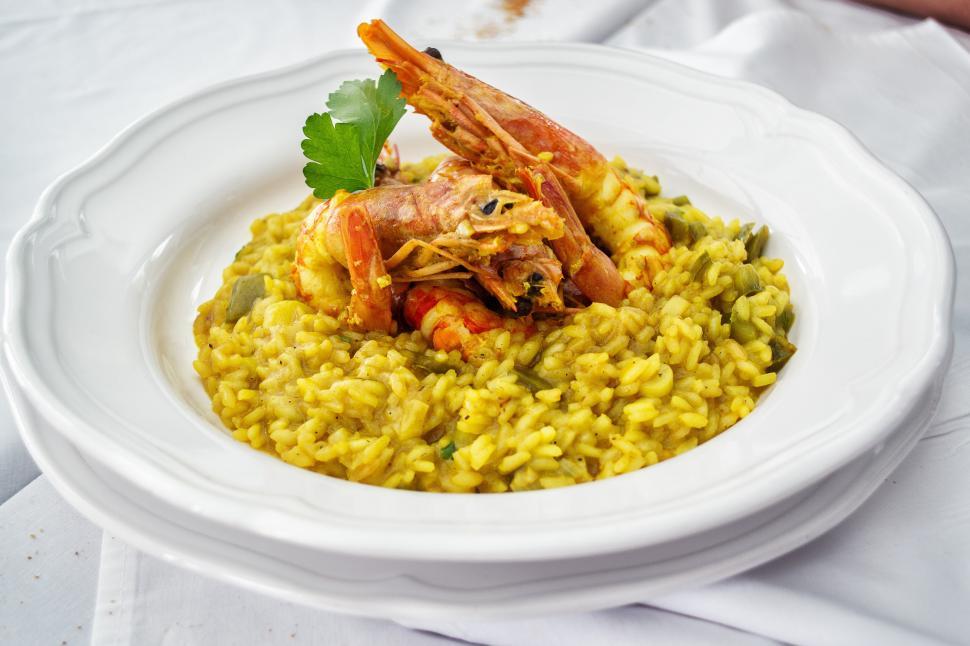
9. **Rice Dishes: Paella and Risotto**Rice might be a global staple, but transforming it into truly exceptional dishes like paella or risotto can be surprisingly tricky, even for seasoned chefs. These dishes aren’t just about cooking rice; they’re about an exquisite balance of liquid absorption, textural development, and a delicate dance with heat. Celebrity Chef Aarón Sánchez, a judge on “MasterChef” and “Chopped,” often points out that risotto’s difficulty stems from its requirement for constant, close watching and meticulous timing to achieve that creamy, perfect consistency.
The primary reason risotto can go awry for beginners is a lack of patience or an eagerness to over-stir. It needs time to slowly come together as the rice absorbs the liquid, releasing its starches to create that characteristic velvety texture. Over-stirring can break down the rice grains too quickly, resulting in a gluey mess rather than distinct, creamy kernels. It’s a dish that teaches you to trust the process, urging you to develop a feel for the rice as it transforms under your watchful eye.
Paella, a vibrant Spanish dish traditionally cooked in a large, flat pan, presents a different kind of challenge, particularly with its critical final step. Unlike risotto, where stirring is key (albeit carefully), paella demands that you *resist* stirring towards the end of its cooking process. The goal is to allow a delicious crust, known as the “socarrat,” to form at the bottom of the pan. This is achieved by briefly turning up the heat and letting the rice caramelize without disturbance.
This crust formation is precisely what makes paella difficult. It’s a delicate balance between achieving a deeply flavorful, slightly crispy socarrat and preventing the bottom from burning entirely. While a perfectly cooked paella, complete with its treasured crust, is incredibly rewarding, the possibility of a burnt bottom is always lurking. With both paella and risotto, aspiring chefs learn invaluable lessons in heat management, liquid control, and the art of knowing when to stir – and, crucially, when to stop.

10. **Chiles en Nogada**For those eager to explore the rich and complex flavors of Mexican cuisine, Chiles en Nogada offers a spectacular and deeply rewarding challenge. This visually stunning dish, meant to represent the colors of the Mexican flag, features poblano chiles generously stuffed with a savory picadillo—a rich blend of pork and beef—then draped in a creamy, white walnut sauce called ‘nogada,’ and finally garnished with vibrant parsley and ruby-red pomegranate seeds. It’s a dish primarily served around Mexico’s Independence Day in September, but its intricate production makes it challenging to master.
The difficulty of Chiles en Nogada isn’t just about sourcing specific ingredients, although some regional variations, like the traditional inclusion of candied cactus (biznaga) in Yuriria, can add a unique layer of complexity (though biznaga can be substituted with other candied or dried fruits). The true test lies in the sheer number of meticulous steps and the precise coordination required to bring all its distinct components together harmoniously. It’s not a single recipe, but rather a symphony of preparations.
The journey begins with the picadillo, which involves careful chopping and cooking of the proteins and produce to create a balanced, flavorful filling. Simultaneously, the poblano peppers must be roasted to achieve that gorgeously grilled and charred skin, which is then painstakingly removed before the peppers are deseeded. This step is crucial for both flavor and texture. Then, the luxurious nogada sauce, made from walnuts, is prepared, demanding a smooth, rich consistency that perfectly complements the spiced filling.
Finally, with all components ready, the delicate process of gently stuffing the prepared poblanos begins. Once filled, they are smothered in the creamy walnut sauce and adorned with the bright pomegranate seeds and fresh parsley. Chiles en Nogada is undeniably a dish that demands considerable time, love, and attention to detail. Yet, every minute spent on its preparation is amply rewarded by a dish that is not only visually magnificent but also bursting with layers of authentic, exquisite flavor – a true culinary triumph.

11. **Complex Taco Fillings (Barbacoa, Machaca, Chilorio)**While a simple ground beef taco might be a weeknight staple, crafting truly exceptional tacos—the kind that leave you dreaming of your next bite—often requires a level of dedication that transforms a quick meal into a culinary project. The secret lies not in the assembly, but in the heart of the taco: its filling. Dishes like barbacoa, machaca beef, or chilorio are perfect examples of fillings that flat-out refuse to be rushed, demanding considerable time and effort to reach their peak deliciousness.
These aren’t your average quick-sear meats. Barbacoa and machaca beef, for instance, are classic preparations that require hours of “low and slow” cooking. This extended, gentle heat is crucial for breaking down tough cuts of meat, rendering them incredibly moist, tender, and intensely flavorful. This patient cooking process allows the spices and aromatics to deeply penetrate the meat fibers, creating a filling that is truly mouth-watering and transforms any taco, chimichanga, or enchilada into something extraordinary. It’s a commitment that pays off in every succulent shred.
Another fantastic, albeit time-consuming, filling is chilorio, a celebrated dish from Sinaloa, Mexico. This flavorful creation typically combines shredded pork with a vibrant mix of various spices and a tangy kick from apple cider vinegar. Much like barbacoa, it relies on extended cooking to achieve its characteristic rich flavor and tender texture. While often sold pre-made or canned in its region of origin, making chilorio from scratch allows for a depth of flavor that is unparalleled.
Even similar dishes, like the Filipino pork adobo, which often uses pork shoulder, underscore the theme: some of the most satisfying meat preparations demand patience and time. These slow-cooked fillings are a masterclass in transforming humble ingredients into something truly spectacular through careful, prolonged cooking. They embody the essence of why some dishes are challenging for beginners—not due to complex techniques, but the unwavering commitment to a lengthy, precise cooking window that yields unparalleled tenderness and flavor.

12. **Beef Wellington**To culminate our exploration of challenging dinner dishes, we arrive at a true showstopper: the Beef Wellington. This classic British masterpiece is not merely a dish; it’s an elaborate culinary construction that demands the utmost precision, layering, and meticulous timing. It stands as a testament to an aspiring chef’s prowess, bringing together several advanced techniques we’ve touched upon, particularly the mastery of dough and the delicate art of cooking multiple components to perfection simultaneously.
Crafting an impeccable Beef Wellington involves several critical stages, each requiring a keen eye and steady hand. It begins with searing a tenderloin of beef to create a beautiful, caramelized crust, locking in its juices. This seared beef is then often coated with a layer of duxelles—finely chopped mushrooms sautéed until all their moisture has evaporated—adding an earthy depth of flavor and acting as a crucial barrier to prevent the pastry from becoming soggy.
The real artistry comes with the wrapping: the prepared beef, often with a layer of prosciutto, is encased entirely in puff pastry. As we’ve discussed, working with puff pastry requires finesse to maintain its delicate layers and ensure it bakes up light and flaky. The challenge is to seal the parcel perfectly, allowing no moisture to escape that could steam the pastry, while also ensuring an even thickness for uniform baking.
The final, and arguably most nerve-wracking, step is baking the Wellington to perfection. This requires precise temperature control and timing to ensure the puff pastry is golden and crisp, the duxelles are perfectly cooked, and the beef inside is cooked to your desired doneness, whether that’s a perfect medium-rare or otherwise. It’s a high-stakes bake, but when executed flawlessly, a sliced Beef Wellington reveals a stunning cross-section of perfectly cooked meat, rich filling, and flaky pastry—a truly unforgettable dish that empowers any cook to feel like a culinary legend.
Read more about: Beyond the Burn: Gordon Ramsay’s Secret Comfort Foods That Will Surprise and Delight You!
While this culinary journey through challenging dishes might seem daunting, remember that every master chef started as a beginner. These aren’t just recipes; they’re opportunities to hone your skills, understand ingredients more deeply, and cultivate the patience that defines true culinary artistry. So, don’t shy away from these magnificent meals. Embrace the challenge, learn from every attempt, and soon you’ll be impressing everyone with your newfound expertise. Happy cooking!

